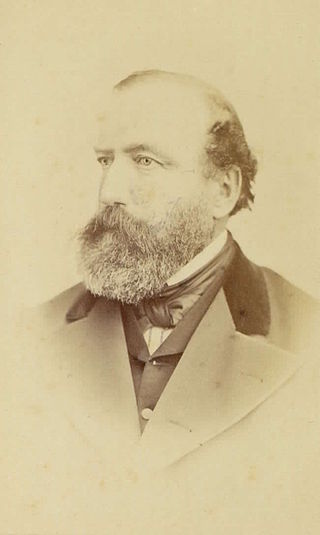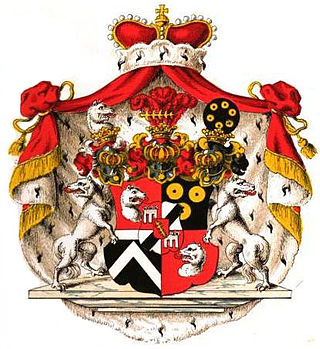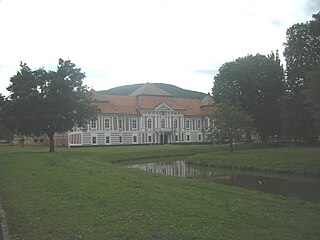
Trebnik Mansion (Slovene : Dvorec Trebnik) is a mansion located in the park above Saint George's Church in Slovenske Konjice, Slovenia.

Trebnik Mansion (Slovene : Dvorec Trebnik) is a mansion located in the park above Saint George's Church in Slovenske Konjice, Slovenia.
The mansion comprises two building tracts and their basements; the northern tract had open arcaded passageways on the ground and first floors, dating to the 17th century. The surrounding grounds contained once-rich garden with botanically interesting tree species and shrubs, two ponds and several associated buildings, such as gardening outbuilding with Orangery, now mostly deserted or serving other purposes. The park once also featured a decorative straw-roofed rustic farmhouse (Miniatur-Bauernhäuschen), for children to work and play.

First mansion below Mount Konjice Slovene : Konjiška gora) was mentioned as early as 1362, held until the 17th century by the barons Trebnik, who sold it to the counts Tattenbach. Today's mansion was built between 1630 and 1636 by Johann Christoph von Tattenbach. After Tattenbach's the mansion was owned by kaiser and then the Žiče Charterhouse until abolition of monastery in 1782. Beside counts Tattenbach the most famous owners of the mansion were Princes of Windischgrätz, princes who used Trebnik as their summer residence. The family remained its owner until the end of World War II when the manion was nationalised by the state.
In the post-war period, the mansion was used for various purposes, it included an inn, kindergarten, a home of elderly people, a music school, and so on. Similarly, like other historical building heritage in Slovenia was not properly maintained. In 1996, it was transferred from the municipal property to the property of a company that undertook to renovate it, but did not have any interest or assets, but even burdened the real estate with bank loans and mortgages, leaving the manor almost to collapse, [1] until the ownership and renewal in 2012 was taken over by the Municipality of Slovenske Konjice.
The mansion's northern tract, once known as Berzirzgang (now Dvor Trebnik) is fully renovated, there is smaller multifunctional hall, named by princess Christiane, and some medicinal offices, some rooms in the top floor are ready to rent (by the local TIC Tourist Information Centre).
Most of the southern tract (main building) with balcony wasput to were the manufacture and shop of products from medicinal herbs under the trademark Dvorec Trebnik, now there is music school again.
46°20′5.65″N15°25′7.82″E / 46.3349028°N 15.4188389°E

Peter Kosler or Kozler was an Austrian-Slovene lawyer, geographer, cartographer, activist, and businessman. He was of ethnic German origin, but also identified with Slovene culture and advocated the peaceful coexistence of the Slovene and German cultures in Carniola.

Slovenske Konjice is a town in northeastern Slovenia. It is the seat of the Municipality of Slovenske Konjice. The area is part of the traditional region of Styria.

The House of Windischgrätz, also spelled Windischgraetz, is a Slovenian-Austrian aristocratic family, descending from Windischgrätz in Lower Styria. The noble dynasty serving the House of Habsburg achieved the rank of Freiherren in 1551, of Imperial Counts in 1682 and of Princes of the Holy Roman Empire in 1804. The family belongs to high nobility.

The Kresija Building or Kresija Palace is a building that along the Philip Mansion marks the entrance to the old town of Ljubljana, the capital of Slovenia. It stands at the Adamič and Lunder Embankment on the right bank of the Ljubljanica immediately downstream of the Triple Bridge, bordering Pogačar Square, Stritar Street, and Maček Street. Until 2007, the building housed the Ljubljana Center Administrative Unit. Now, there are municipal offices, the Kresija Gallery, and the Ljubljana visitor centre.
Gravisi–Buttorai Mansion is a mansion in Koper, a port town in southwestern Slovenia. It is a protected monument of local significance. The mansion is situated at Shoemaker's Street in the old town center. It was the seat of a branch of the Gravisi family, whose senior line had the title of Marquis of Pietrapelosa, first granted to Nicolò Gravisi in 1440.

Gravisi–Barbabianca Mansion is a Baroque mansion in Koper, a port town in southwestern Slovenia. It was built in 1710. It was the family seat of the Gravisi family, who held the title of the Marquis of Pietrapelosa. Today it is the home of a music school.

Betnava Mansion is a manorhouse located near the city of Maribor in northern Slovenia.

Žiče Charterhouse, also Seiz Charterhouse, was a Carthusian monastery or Charterhouse in the narrow valley of Žičnica Creek, also known as Saint John the Baptist Valley after the church dedicated to St. John the Baptist at the monastery near the village of Žiče and at settlement Špitalič pri Slovenskih Konjicah in the Municipality of Slovenske Konjice in northeastern Slovenia.

Račji Dvor Mansion is a 17th-century mansion standing on a plain at the western edge of the town of Maribor, Slovenia, at the address of Raški dol 1. It has been protected as a cultural monument of national significance.

Strmol Mansion is a 15th-century manorhouse located on a low hill above the old town center of Rogatec, Slovenia. It is notable as one of the few castles in Slovenia to have retained a Slovene name throughout its history.

Goričane is a settlement northwest of Ljubljana in Slovenia. It lies on the right bank of the Sora River, just before its confluence with the Sava River, in the Municipality of Medvode in the Upper Carniola region.

Valburga is a settlement on the left bank of the Sava River in the Municipality of Medvode in the Upper Carniola region of Slovenia. It includes the hamlets of Plave and Na Mlaki.

Baroness Adelma Vay de Vaya,, was a medium and pioneer of spiritualism in Slovenia and Hungary.

Bogenšperk Castle is a 16th-century castle located in the Municipality of Šmartno pri Litiji in central Slovenia. It is best known for its association with the 17th-century scientist and natural historian Johann Weikhard von Valvasor, a fellow of the Royal Society in London.

Črešnjice is a settlement in the Municipality of Vojnik in eastern Slovenia. The area is part of the traditional region of Styria. It is now included with the rest of the municipality in the Savinja Statistical Region.
Pesniški Dvor is a settlement in the Municipality of Pesnica in northeastern Slovenia. It lies in the Pesnica Valley in the traditional region of Styria. The entire municipality is now included in the Drava Statistical Region.
Polički Vrh is a settlement in the Municipality of Pesnica in northeastern Slovenia. It lies in the Slovene Hills, part of the traditional region of Styria. The municipality is now included in the Drava Statistical Region.
Dobrnež is a settlement in the Municipality of Slovenske Konjice in eastern Slovenia. It lies on regional road leading east from Slovenske Konjice to Slovenska Bistrica. The area is part of the traditional region of Styria. The municipality is now included in the Savinja Statistical Region.

The Volčji Potok Arboretum was opened to the public in 1952. It originally formed part of the Souvan family estate in 1885, which was taken over by the University of Ljubljana in 1952 and legally declared a place of cultural and natural heritage of national importance. Now independent of the university, it is the most visited botanical garden in Slovenia and in recent years has become well known for its spring flower shows. The arboretum is primarily a botanical garden for woody plants, the only one in Slovenia.

Novi Klošter is a former Dominican priory near Polzela (Slovenia), built in the mid-15th century by Frederick II, Count of Celje.